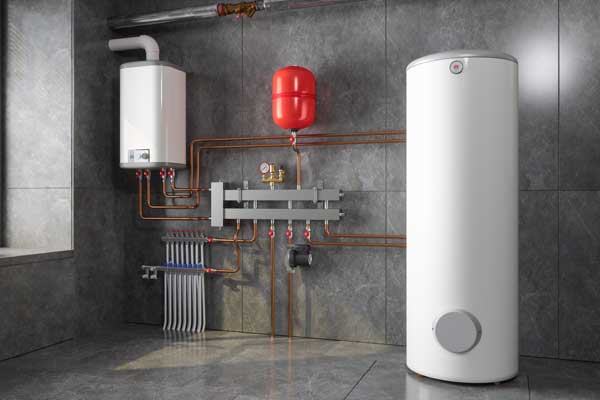The article on the next paragraphs involving How to Maintain Your Water Heater & Prolong its Life is truly intriguing. Don't skip it.

Hot water is crucial for day-to-day comfort, whether it's for a refreshing shower or cleaning dishes. To guarantee your warm water system runs effectively and lasts longer, regular maintenance is essential. This short article provides practical tips and insights on how to keep your home's warm water system to stay clear of disturbances and pricey repair services.
Introduction
Maintaining your home's hot water system could appear overwhelming, yet with a couple of easy steps, you can ensure it runs efficiently for several years to find. This guide covers everything from understanding your warm water system to do it yourself upkeep suggestions and recognizing when to call specialist assistance.
Significance of Keeping Your Warm Water System
Routine maintenance not just prolongs the life expectancy of your warm water system yet likewise ensures it runs effectively. Overlooking maintenance can bring about reduced effectiveness, greater energy bills, and also premature failing of the system.
Indicators Your Warm Water System Needs Upkeep
Recognizing when your hot water system requires interest can avoid significant concerns. Watch out for indicators such as irregular water temperature, weird noises from the heating system, or rustic water.
Understanding Your Warm Water System
Before diving right into upkeep tasks, it's practical to comprehend the standard elements of your hot water system. Normally, this includes the hot water heater itself, pipes, anode poles, and temperature level controls.
Monthly Upkeep Tasks
Regular regular monthly checks can help capture minor problems before they intensify.
Flushing the Hot Water Heater
Flushing your hot water heater removes debris buildup, enhancing efficiency and extending its life.
Checking and Changing Anode Rods
Anode rods stop deterioration inside the storage tank. Inspecting and replacing them when broken is important.
Evaluating and Changing Temperature Level Settings
Changing the temperature level settings makes certain optimal efficiency and safety.
DIY Tips for Upkeep
You can perform a number of upkeep tasks yourself to maintain your hot water system in top problem.
Checking for Leaks
Consistently examine pipelines and links for leaks, as these can cause water damages and higher expenses.
Examining Pressure Relief Valves
Checking the stress relief valve ensures it operates appropriately and avoids extreme stress buildup.
Insulating Pipes
Shielding warm water pipes decreases warm loss and can conserve energy.
When to Call a Professional
While DIY upkeep is valuable, some issues need expert experience.
Complex Issues Needing Expert Aid
Instances consist of major leaks, electrical issues, or if your hot water heater is constantly underperforming.
Regular Specialist Upkeep Benefits
Professional maintenance can include extensive evaluations, tune-ups, and making sure compliance with security requirements.
Final thought
Routine upkeep of your home's warm water system is necessary for performance, long life, and price financial savings. By adhering to these pointers and recognizing when to look for expert assistance, you can make sure a reputable supply of hot water without unexpected disruptions.
Water Heater Maintenance Tips
Test the TPR Valve
Shut off the power and the cold-water supply valve. Place a bucket under the pipe connected to the temperature-pressure-release (TPR) valve on the top or side of the tank. (This valve opens if the tank pressure gets too high.) Lift the valve’s tab to let some water out, then let go. If water keeps flowing, drain the tank partway, unscrew the old valve with a pipe wrench, and install a new one. Check the Anode Rod
Put a hose to the tank’s drain cock and let out a few gallons of water. Now fit a 1 1/16-inch socket onto the rod’s hex head on top of the heater (or under its top plate) and unscrew the rod. If it’s less than ½ inch thick or coated with calcium, buy a new one, wrap its threads with Teflon tape, put it back in the tank, and tighten securely. Use this segmented rod if headroom above the tank is limited. Drain the Tank and Wash Out Sediment
Drain the remaining water in the tank into the bucket, then stir up the sediment on the tank’s bottom by briefly opening the cold-water supply valve. Drain and repeat until clean water comes out of the hose. Close the drain cock, refill the tank, and turn its power back on. Adjust the Temperature
Find the temperature dial on the side of the tank and unscrew its cover. Adjust the dial to 120 degrees using a flathead screwdriver. For every 10 degrees the temperature is lowered, you can expect to save up to 5 percent in energy costs. Turn the water heater off or the thermostat down to its lowest setting if you plan to be away from home for more than three days. Insulate the Pipes
Buy some self-sticking 3/8-inch-thick foam pipe insulation that matches the pipes’ diameter. Slide the foam over the hot-and cold-water pipes as far as you can reach. Insulating the cold-water pipe prevents condensation in summer. Peel the tape and squeeze the insulation closed. If the pipe is 6 inches or less from the flue, cover it with 1-inch-thick unfaced fiberglass pipe wrap. https://www.thisoldhouse.com/plumbing/21016402/how-to-maintain-a-water-heater

We are very intrigued by What Kind of Maintenance Do Water Heaters Need? and I really hope you enjoyed reading the new blog entry. Enjoyed our piece of writing? Please share it. Let someone else discover it. Thanks for being here. Come back soon.
See Availability